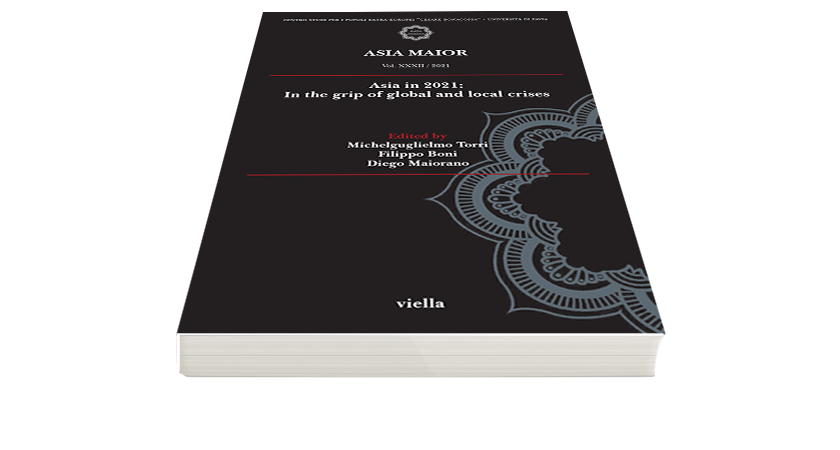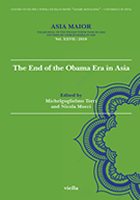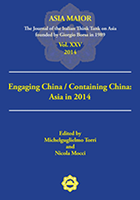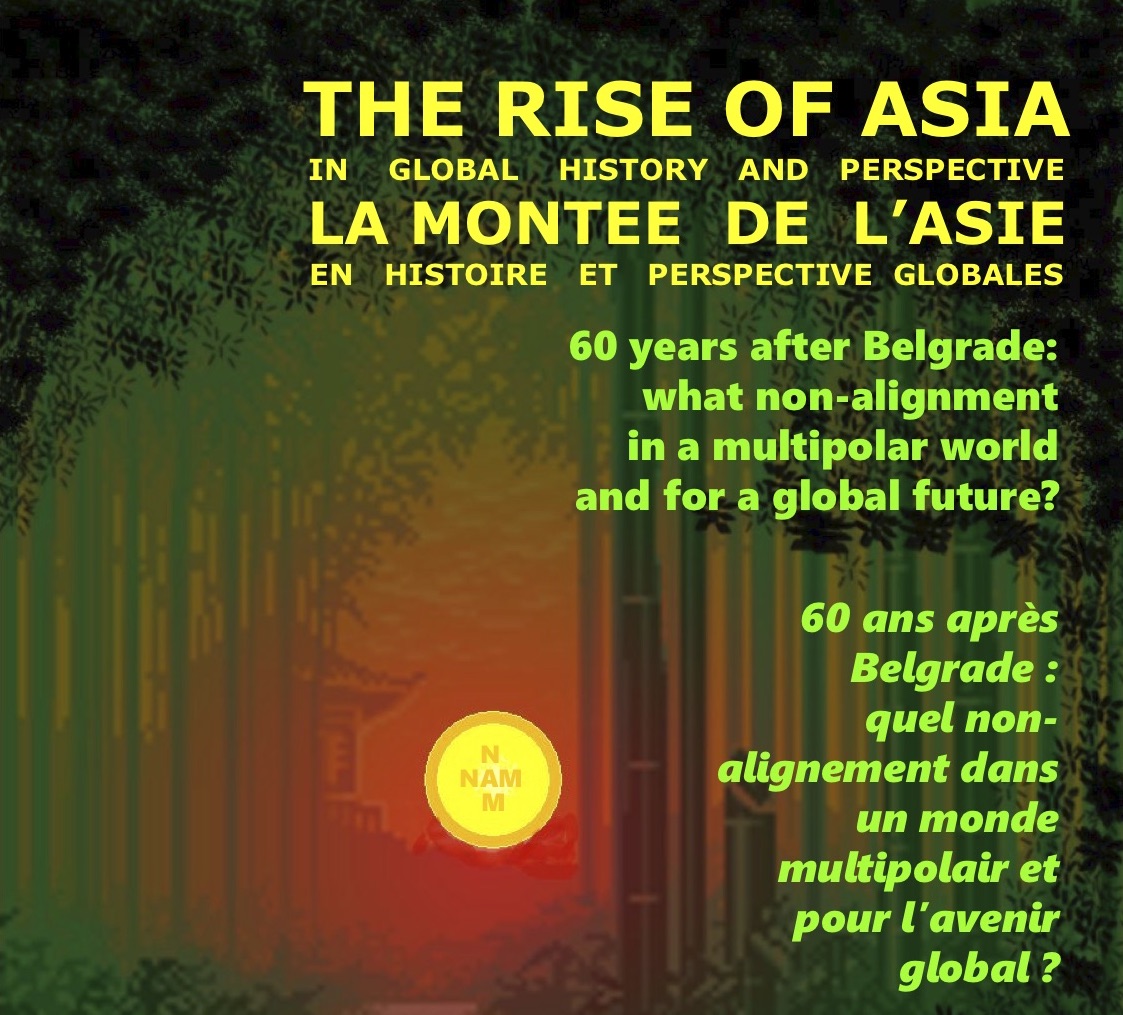Review. Not a community, but a multilateral institution: A Korean perspective on the East Asian International Society
동아시아 국제사회와 동아시아 상상: 한국국제정치사상 연구[Dong-asia Gugjesahoe-wa Dong-asia Sangsang: Hangug-gugje-jeongchi-sasang Yeongu] (Imagining International Society in East Asia: International Political Thought of Korean Intellectuals) /장인성 [Jang, In-Sung] – 서울: 서울대학교출판문화원 (Seoul: Seoul National University Press), 2017, 590 pp.
According to In-Sung Jang, the East Asian international society is both real and imagined. This is reflected in the original Korean language title which juxtaposes the two subjects of imagining East Asian international society and East Asia. In the English title, international society is imagined within the context of the actual East Asia.
In the 1990s, as the economic development of the East Asian countries coincided |with the end of the Cold War and globalisation, a discussion began within East Asia on the concept of an East Asian community. In Korea and Taiwan, which both experienced extreme forms of state violence which arose from the incongruences of division during the Cold War period, the discourse on East Asia, which was an alternate view of the post-Cold War era, captured the introspective nature of those intellectuals who formulated it. This discourse gained prominence especially quickly in Korea. This is because a desire was emerging within the East Asian community to achieve concrete «gains», identify «values» worth pursuing, and devise a «way» to realise these gains and values (pp. 7-9).
However, this discourse called for the restructuring of East Asia by applying the theory of «rationalistic regionalisation» which is based on the European experience. This in turn led to the problem of regarding the distinct characteristics of East Asia, which lacked the experiences of Europe, as an irrational phenomenon. Therefore, there is a gap between logic and experience in the East Asia discourse. Here, the author suggests «reflecting on the historic form of imagining irrational East Asia». The East Asia discourse is more active in Korea than any other country in East Asia. This means that the inherent logical gap is that much larger in the Korean version of the East Asia discourse, and it also signifies that the research on the Korean perspective of East Asia is all the more important in clarifying both the real and imagined East Asian international society (pp. 10-13).
Another reason for the popularity of the East Asia discourse in Korea may be the «post-imperialism» phenomenon in East Asian international society which is driven by the modern sovereign state system. East Asia experienced three different imperial systems, the Sino-centric tributary system, the Imperial Japan system, and the Cold War system, each with its own characteristics and order. The end of the Cold War also meant the end of imperialism (pp. 19-23). Korea consistently faced an uneven balance of power under the various imperial systems and was forced to pursue survival and development as a small nation. In this respect, it is understandable that the introspective Korean intellectuals would look to the East Asia discourse when looking towards the post-imperial period. The author’s analysis, therefore, naturally starts with the discourse on East Asian international society.
In the first part of the book, the author contemplates the concept, composition, and dynamics of the East Asian international society. In the first chapter, while actively accepting the pioneering research of the English School scholars who developed the theory of international society based on the European experience, the author suggests that there is a need to consider the significance of incorporating the experience of non-western regions into the European-centric theory of international society. Consequently, we can see that a characteristic of the formation of the East Asian international society is sociality which comes from the collision of the principles of European international system and the practices of the East Asian international society (pp. 67-71).
Meanwhile, as the author points out in chapter 2, the regulating structure and operating dynamics of the East Asia region are different from those of other regions, and thus it can be said that an East Asian international society exists and can be imagined and conceptualised as such. Perceptions on the differences between inter-regional structure on the global level and intra-regional structure on the East Asian regional level are derived from this.
Chapter 3 discusses imagination and identity. Imagining that the operating principles of international politics are different on the global and regional levels has led to an identity in which the East Asian international society feels real (pp. 103-107). This represents the author’s basic research framework which deals with the interpenetration of the actual East Asian international society with the imagined East Asia.
In the second part of the book, the author introduces Korea’s conceptualisation of East Asia during the East Asian international society’s formative period in the modern era of the late 19th century, and analyses the characteristics of this conceptualisation. Chapter 4 provides a topos of Korea’s geopolitical location in the conceptualisation of Asia and introduces the conceptualisation of East Asia in modern Korea which is developed between Asia and the Orient. During the process of transferring European international laws to East Asia, Korean intellectuals imagined a political code for Asia and empathised with weak nations that shared a similar fate as Korea. However, regions outside of Northeast Asia were, at those times, too far away for Korean intellectuals to communicate with them. As a result, the entirety of Asia, including Southeast Asia, were not perceived to be partners with whom they could discuss their shared fate. It is here that the idea of East Asia, consisting of Korea, China, and Japan, originated (pp. 174-175).
Next, the author traces the process of Korean intellectuals embracing the main concepts of international politics through the medium of the East Asian international society. These concepts include sovereignty and the public (chapter 5), the balance of power (chapter 6), peace (chapter 7), race and identity (chapter 8), among others. Chapter 9, the last chapter of the second part, takes a look at Japanese intellectuals’ view of international society and the East Asia discourse based on the concepts of «order and justice». The views of modern Japanese politicians and intellectuals contrasts sharply with the Korean perspective presented in chapters 5 to 8, the former having a much more distinct Hobbesian (that is, power politics) approach to international society with the latter being a more pacifist project.
In the third part of the book, the author skips forward one hundred years to the post-Cold War period. To the Korean scholars of the early 20th century, East Asia was divided into spaces seized by Japan and spaces resisting that invasion. East Asia in the latter half of the 20th century was again divided by the Cold War. After exiting the Cold War, the world was rocked by globalisation and the information age, and for the first time in nearly a century Korean intellectuals viewed East Asia as one integrated space.
However, as the author shows in chapter 10, due to the persistence of cracks and conflicts within East Asian international society, the imagination of East Asia in Korea continues to overlap with that of Northeast Asia, and vagueness in the conceptual differentiation between the two remains (pp. 390-397). Yet, Northeast Asia is more than just a concept. That is because real economic interdependence and political rifts and conflict exist among Korea, China, and Japan.
When Korean scholars tried to walk the line between the real Northeast Asia and the ambiguously imagined East Asia, «a spectre» in the form of the Japanese East Asia discourse was haunting East Asia. Here we can find the reason that the author chose to place the discussion on the Japanese East Asia discourse in chapter 11. Prodded into action by the Japanese discourse on East Asia, Korean intellectuals in the 21st century have widened their conceptualisation from Northeast Asia to East Asia. Therefore, «a new conceptualisation of East Asia» is still an unrealised «plan» or «intellectual experiment» (pp. 452-455).
In chapter 12, while recognising the contributions to the conceptualisation of East Asia in Korea by the introspective East Asia discourse, the author also criticises the discourse’s proponents for their vertical notion of space between the broader world and individual states as well as pointing out that for them East Asia remains a plan only. As a result, they have missed the fact that horizontal spaces exist in which mutual communication can take place on a variety of topics. The author argues that the introspective imagination of East Asia needs to be supplemented within the pages of the distinguished Korean journal Creation and Criticism with an analysis of the actual East Asian international society and the functions of international politics which have unfolded within that arena (pp. 458). At this point, the cooperation and tension between Korea and Japan is an important factor to watch when estimating the formation of East Asian international society.
The author examines the dynamics of the conflict and cooperation in Korea-Japan relations in the post-Cold War period within the context of the East Asian international society in chapter 13. And according to the author, the structuralised tensions between Korea and Japan in the post-Cold War era are proof of a social relationship, and signifies that an international society on the East Asia level is visible. Therefore, rather than using a «chronology of memory» which expects the two countries to overcome their conflict as time passes, a «topology of memory» which sees the institutionalisation of the expression of tensions is a means to feel the existence of the East Asian international society (pp. 501-502).
In chapter 14, the final chapter of the main contents, the author questions the possibility of establishing an East Asian international culture. The author argues that the discussion of a «cultural community» on the East Asia regional level is mere fiction as the East Asia discourse is blanketed with the idea of «state citizen culture». However, the author is not completely denying the prospect of establishing an East Asian «international culture». Just as culture exists in any society, the East Asian international society, as a real entity, can develop an «international culture» on the regional level. Such a culture could develop at the intersection of the centrifugal forces for global universality and the centripetal forces for national distinctness (pp. 517-523).
In the concluding chapter, the author declared the following: «the people of East Asia are witnessing the advent of a regional space unparalleled in history», and that this signifies the «beginning of history» in East Asia (pp. 527). This also casts doubt on the relevance of the mainstream international relations theories which prophesised «the end of history» (pp. 529). Now, the work shifts from «theory to history» (pp. 529-530). This is an antithesis against the hasty attempts to draw theories from a dearth of historical experiences of East Asia. The author is interested in the experiences born from the development of the East Asian international society, and is expecting that the experiences of East Asia will cause the theories of International Relations, which are based on lessons learned from Europe and the United States, to crack under this new evidence. This also strongly implies that the creation of a «community», which was the final stage of the European experience, cannot be generalised.
When the existence of an East Asian international society has been recognised, and while the likelihood of it developing into a community is uncertain, a possible direction may be the «institutionalisation of multilateralism». The author, as his final conclusion, emphasises that a firm foundation needs to be built on the modern state paradigm for the publicness of the East Asian international society to be secured. This sounds like a warning against the «post-modern» discourses on East Asian community. But as Brexit and Trump’s «America First» policies show, the world is seeing a regression from «community», and even «multilateralism» is in a precarious state. Korea’s imagination of East Asia has moved beyond East Asia and has started to include global undertones.





































